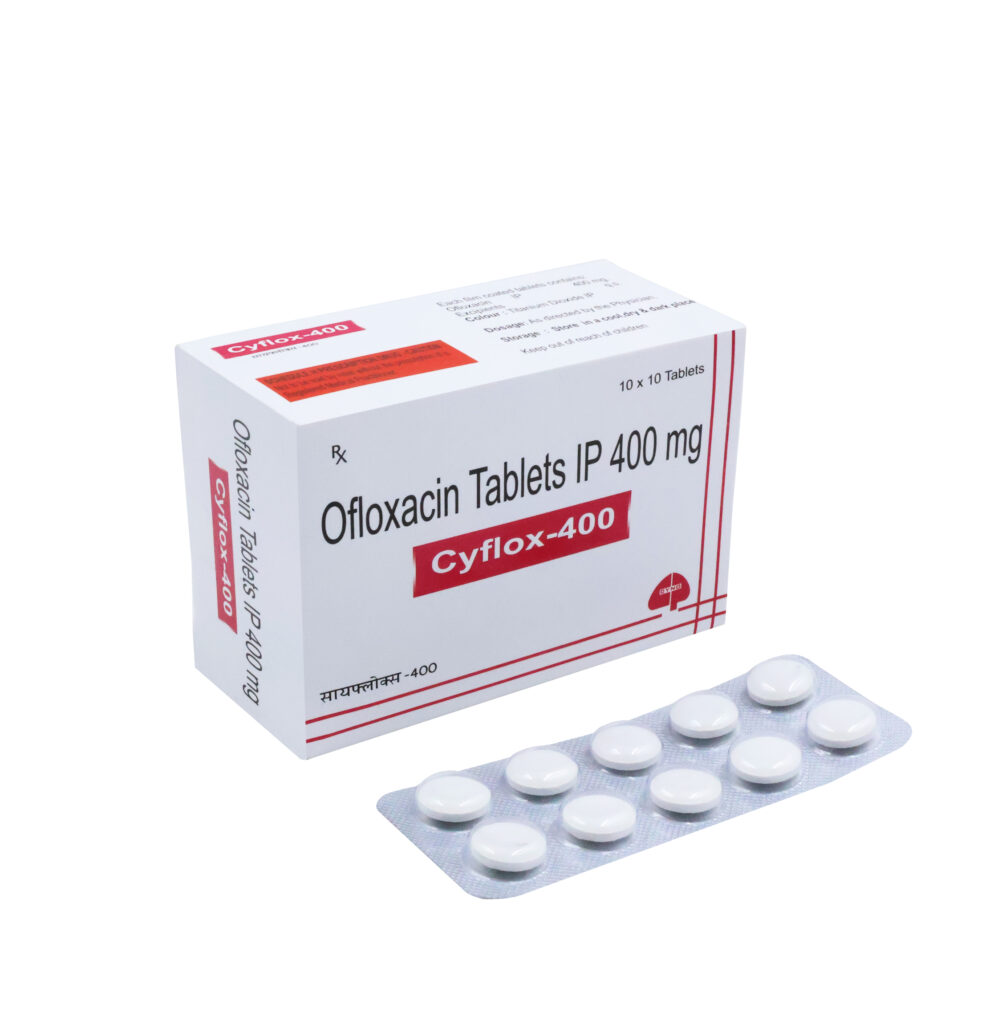Mechanism of Action
Ofloxacin is a bactericidal drug. It act by inhibiting the enzyme DNA gyrase (Topoisomerase 2) and Topoisomerase 4.DNA gyrase helps in the formation of a highly condensed three dimensional structure of the DNA by its nicking and closing activity and also by introducing negative supercoil in to the DNA double helix. Ofloxacin inhibits DNA gyrase which results in abnormal linkage between opened DNA and gyrase and negative supercoiling is also impaired. This will inhibits transcription of DNA in to RNA and subsequent protein synthesis.
Pharmaco Kinetics
Absorption: Ofloxacin is rapidly and completely absorbed after oral administration. Distribution: It is widely distributed in the body. Metabolism: It undergoes insignificant metabolism. Excretion: Drug is excreted mainly through urine.
Onset Of Action
Within 0.5 hour
Half Life 5 – 8 hours
Duration Of Action 12 – 16 hours
Adverse Effects
1. Nausea 2. Vomiting 3. Diarrhoea 4. Abdominal discomfort 5. Constipation 6. Dry mouth 7. Dizziness 8. Headache 9. Rash 10. Pruritis 11. Pseudomembranous colitis 12. Visual disturbances 13. Insomnia
ContraIndications 1. Hypersensitivity to Ofloxacin and other Fluoroquinolones
Special Precautions
1. Hepatic impairment 2. Renal impairment 3. Cerebral arteriosclerosis 4. Epilepsy 5. CNS disease 6. Avoid exposure to sunlight 7. Caution while driving the vehicle or operating machine or involved in any hazardous activities.
Pregnancy
Contraindicated
Breast Feeding
Contraindicated
Old Age
Use with caution
Children
Contraindicated NEONATES : Contraindicated
Interactions
Oral Anticoagulants: The effects of oral anticoagulants, may be increased. Theophylline: Increased plasma levels of theophylline resulting in toxicity. NSAID`s: CNS excitation may occur.
Indications
1. Bronchitis 2. Pneumonia 3. Urinary tract infection 4. Bone and joint infections 5. Intra-abdominal infections 6. Gonorrhoea 7. ENT infections 8. Skin and soft tissue infections 9. Typhoid fever 10. Prostatis 11. Otitis 12. Gynaecological infections 13. Conjunctivitis 14. Keratitis
Dosage
Adults: 200 – 400 mg / day depending on the severity and type of infection Bronchitis, Pneumonia, Skin and soft tissue infections: 800 mg / day in 2 divided doses for 10 days Gonorrhoea: 400 mg as a single dose. Prostatis, Cervicitis & Urethritis: 600 mg / day in 2 divided doses for 1 week. UTI: 200 – 800 mg / day in single or divided doses Typhoid fever: 400 – 800 mg / day in 2 divided doses
Schedule H
Storage
Store at 15 – 30 degree C in a tightly closed container.
Over Dose
Give supportive measures and symptomatic treatment. Gastric lavage has to be done.

WhatsApp us